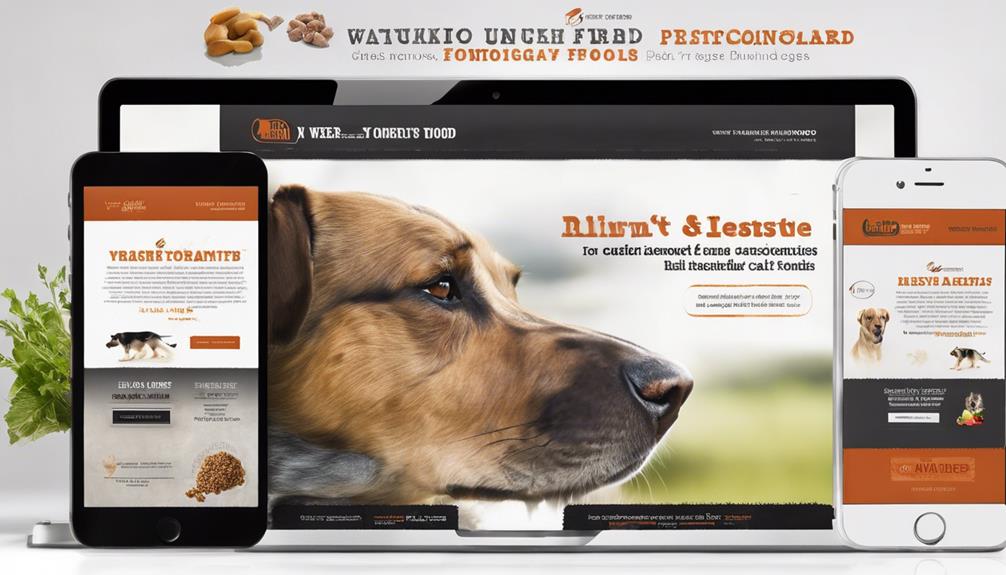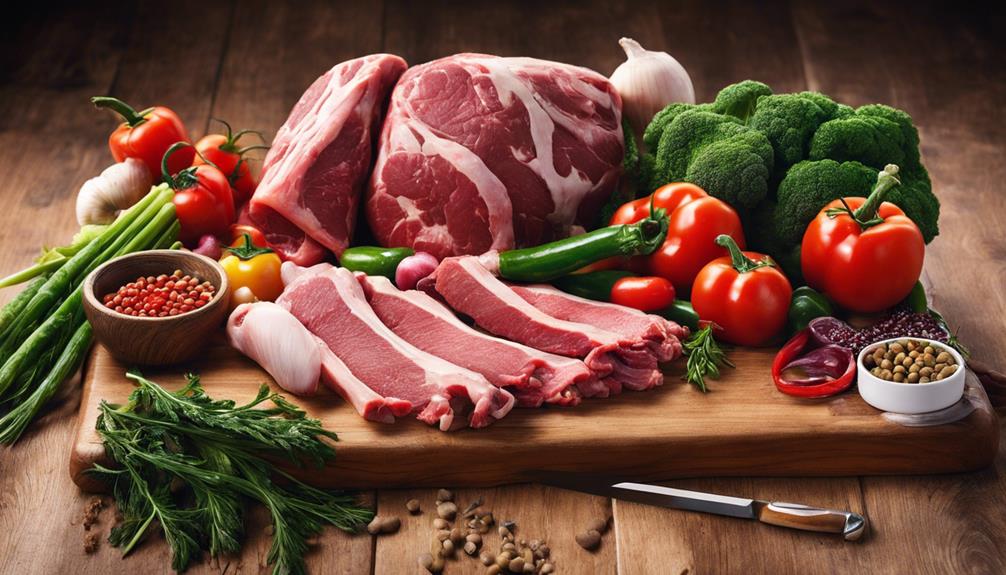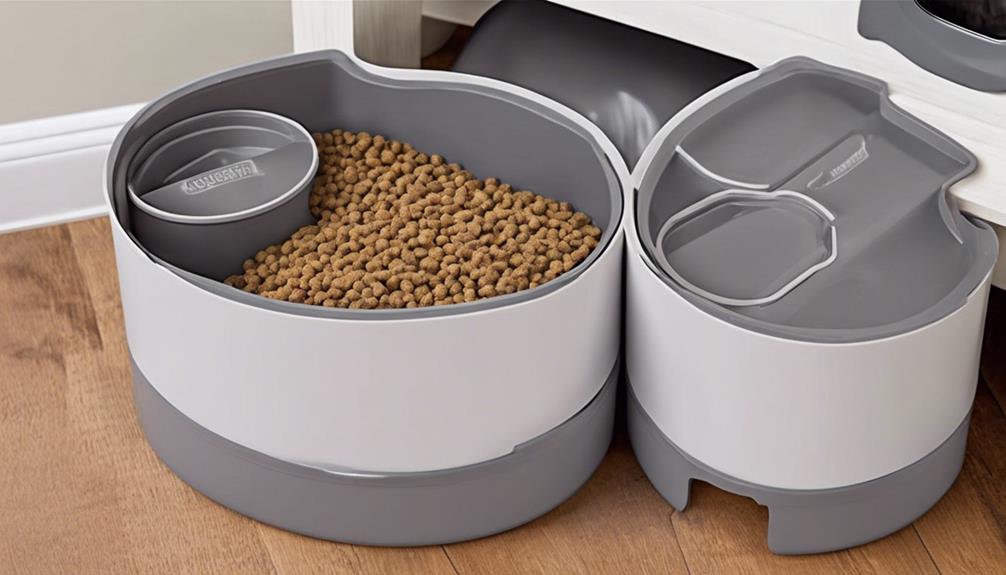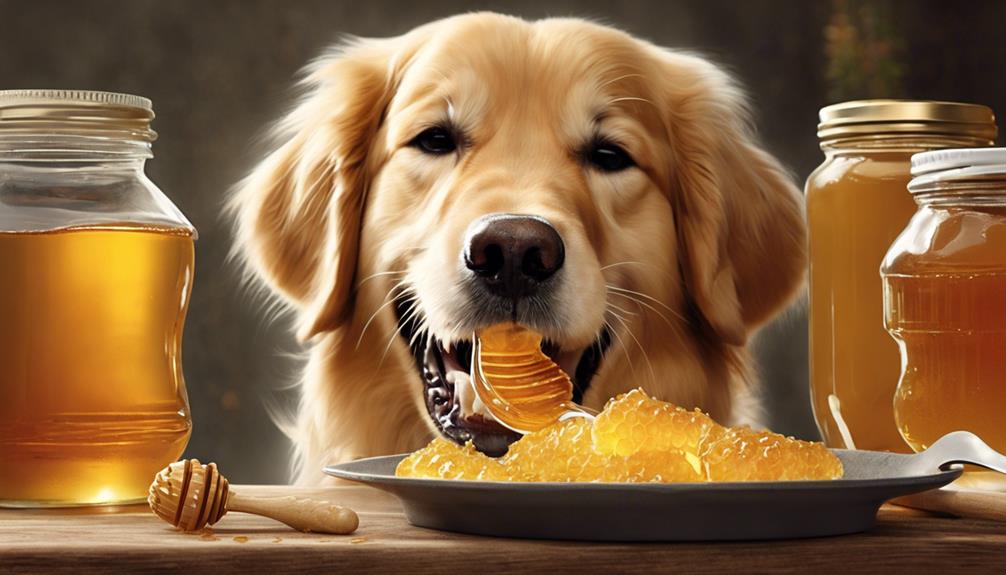With the pet food industry booming and projected to reach $170.11 billion by 2030, it is crucial to understand market trends and secure the necessary investment for selling raw dog food. Emphasizing high-quality raw ingredients, suitable machinery, and stringent quality control measures is imperative. Ensuring adherence to regulatory standards like FSSAI and state veterinary licenses, as well as implementing strategic operational structures and efficient marketing strategies, is essential to meeting the market demand for nutritious pet products. Having a grasp on these factors establishes a solid groundwork for a thriving raw dog food business.
Key Takeaways
- Source high-quality raw ingredients from trusted suppliers.
- Invest in efficient machinery for processing.
- Ensure strict quality control measures.
- Collaborate with pet influencers for wider reach.
- Utilize social media for brand visibility.
Market Trends in Raw Dog Food
What drives the significant growth in the raw dog food market, attracting pet owners seeking natural and nutritious options for their beloved companions?
The answer lies in the increasing awareness among pet owners about the benefits of feeding their furry friends raw dog food.
With the pet food industry projected to reach $170.11 billion by 2030, there's a growing demand for high-quality and balanced raw dog food products.
Pet owners are becoming more conscious of the essential nutrients needed by their pets for peak health and are turning to raw feeding as a solution.
This trend isn't only seen globally but also in countries like India, where the pet food industry is expanding rapidly to cater to the needs of over three crore pet animals.
As entrepreneurs, understanding and tapping into these market trends can be key to offering innovative and premium raw dog food options to meet the increasing demand in the pet food industry.
Investment Requirements for Entrepreneurs

Entrepreneurs looking to venture into the raw dog food industry in India must carefully assess the investment requirements based on factors such as facility size, production capacity, and target market scalability. When contemplating starting a pet food manufacturing business, it's essential to comprehend the financial commitments involved.
Here are some key points to ponder regarding investment:
- Small-scale operations typically require an investment ranging between 5 to 20 lakhs.
- Medium-scale pet food manufacturing businesses may need investments of 20 to 50 lakhs.
- Large-scale ventures in the pet food industry could necessitate investments exceeding 50 lakhs.
- The actual investment amount can vary significantly based on factors such as the size of the facility, production capacity, and the extent of market penetration.
Entrepreneurs should conduct thorough research and seek advice from industry experts to obtain accurate estimates tailored to their specific business plans. Understanding the investment requirements is pivotal for making informed decisions and setting realistic financial goals for a successful pet food manufacturing venture.
Regulatory Compliance for Pet Food
Shifting from investment considerations to regulatory compliance, understanding and adhering to specific guidelines and licenses is imperative for pet food businesses in India. For raw pet food entrepreneurs, obtaining an FSSAI license is essential to guarantee compliance with food safety standards set by the regulatory authorities. Additionally, acquiring a State Veterinary license is necessary to adhere to specific guidelines for raw pet food production, ensuring proper nutrition and safety for pets.
Moreover, it's mandatory for pet food businesses above a certain turnover threshold to register for GST. This step guarantees proper tax compliance and legal operation within the industry. Additionally, obtaining a factory license along with necessary permits such as fire safety and pollution control is crucial for operational compliance in the pet food sector.
Operational Setup Strategies

When establishing an operational setup for a pet food manufacturing business, selecting a location with convenient access to transportation, raw material suppliers, and distribution channels is crucial for efficient operations. Here are some strategies to contemplate:
- Space Requirements: Determine the space needed based on your production scale, ranging from 500 to 5000 square feet.
- Compliance Measures: Confirm your chosen space complies with health and safety regulations to uphold a clean and safe production environment.
- Supplier Relationships: Foster strong connections with reliable suppliers to secure a steady and safe supply of high-quality raw ingredients.
- Ingredient Quality: Utilize only high-quality ingredients in your pet food manufacturing to offer nutritious and safe options for pet owners looking to provide a raw diet for their pets.
Production Tips for Raw Dog Food
To optimize the production process of raw dog food, prioritizing compliance with health and safety regulations is vital to guarantee quality and safety standards are maintained. When producing raw dog food, it is essential to focus on quality control measures to make sure the final product meets the highest standards. Below is a table outlining key production tips for raw dog food:
| Production Tips | Description |
|---|---|
| Raw Ingredients | Source high-quality meat, bones, organs, fruits, and vegetables from trusted suppliers. |
| Equipment | Invest in proper machinery for processing, grinding, and packaging raw dog food efficiently. |
| Quality Control | Implement strict measures to monitor freshness, nutritional content, and safety of the food. |
| Pet Nutrition | Consult with pet nutritionists or veterinarians to create balanced recipes meeting AAFCO standards. |
Effective Marketing Strategies

Moving from the production phase, the strategic promotion of raw dog food involves employing various marketing tactics to enhance brand visibility and customer engagement. To effectively market raw dog food, consider the following strategies:
- Utilize Social Media Platforms: Leverage platforms like Instagram and Facebook to showcase the benefits of raw dog food, such as boosting immune systems with essential nutrients and fatty acids. Engage with pet owners through informative posts and interactive content.
- Collaborate with Pet Influencers: Partnering with pet influencers and bloggers can help reach a wider audience and build credibility for your raw dog food brand. These influencers can highlight the advantages of raw feeding and its positive impact on dogs' health.
- Offer Educational Content: Provide educational resources on your website or blog about the importance of raw feeding, emphasizing the benefits of natural ingredients like raw meat for dogs' overall well-being.
- Participate in Events: Attend pet expos, trade shows, and local events to introduce your raw dog food products to potential customers. Networking with other pet industry professionals can also help in establishing your brand within the market.
Scaling Your Raw Dog Food Business

Expanding a raw dog food business requires strategically increasing production capacity to meet rising demand. To effectively scale your operations, consider investing in equipment upgrades and automation to streamline manufacturing processes, ensuring efficiency and consistency in your pet food products. Evaluating market trends and gathering customer feedback will help in developing new product lines, such as incorporating organ meats for added nutritional benefits. Building partnerships with distributors and retailers is essential for expanding your reach and accessing new markets. Implementing effective marketing strategies will increase brand visibility and attract a broader customer base to feed raw to their pets.
| Key Steps to Scale Your Raw Dog Food Business | ||
|---|---|---|
| 1. Upgrade Equipment | 2. Develop New Product Lines | 3. Establish Partnerships |
| Invest in machinery to increase production capacity. | Introduce organ meats for enhanced nutrition. | Collaborate with distributors and retailers. |
Frequently Asked Questions
How to Start Selling Raw Dog Food?
To start selling raw dog food, I conduct market research, develop a unique selling proposition, invest in necessary licenses and certifications, establish supplier relationships, and implement effective marketing strategies to reach pet owners and retailers.
What Is the 80 10 10 Rule for Raw Dog Food?
I follow the 80 10 10 rule for raw dog food: 80% muscle meat, 10% bone, and 10% organ meat. This balanced ratio provides essential nutrients like protein, calcium, and vitamins, ensuring my dog's peak health and well-being.
What Is the 95 Rule for Dog Food?
The 95 Rule for raw dog food dictates that it should contain 95% meat, organs, and bones, with 5% fruits, vegetables, and supplements. This proportion guarantees dogs receive essential nutrients for peak health and mimics their natural diet.
What Are the Guidelines for Raw Dog Food?
Guidelines for raw dog food involve using uncooked meat, bones, fruits, veggies, and supplements. Nutritionists formulate recipes to align with AAFCO standards for balanced diets. Proper handling prevents bacterial contamination. Understanding risks and benefits is crucial for pet owners.
What Makes Small Batch Raw Dog Food a Great Choice for Selling?
Pet owners are drawn to the uniqueness of small batch raw dog food because of its superior quality and freshness. This type of food is made in small quantities to ensure maximum nutritional benefits for furry friends. The demand for this high-quality product makes it a great choice for selling.
Are Petsmart’s raw dog food options mentioned in the Ultimate Guide for Selling Raw Dog Food?
Yes, the Ultimate Guide for Selling Raw Dog Food does mention raw dog food options in Petsmart. This comprehensive guide outlines the benefits of feeding raw dog food and includes a list of popular retailers, including Petsmart, that offer a variety of raw dog food options.
Conclusion
To sum up, the raw dog food industry presents a lucrative opportunity for entrepreneurs looking to capitalize on the growing demand for natural pet nutrition.
By adhering to regulatory standards, implementing efficient production processes, and utilizing effective marketing strategies, you can successfully scale your business and meet the needs of pet owners seeking high-quality food for their beloved companions.
Remember, in this competitive market, success isn't just a possibility, but a paw-sibility waiting to be set free.










